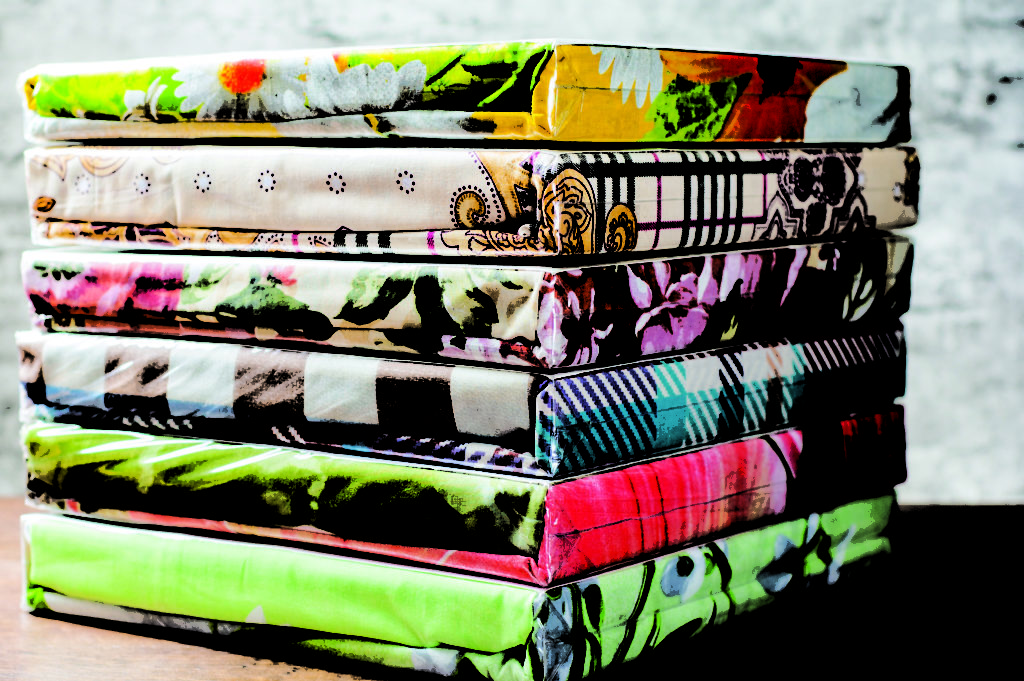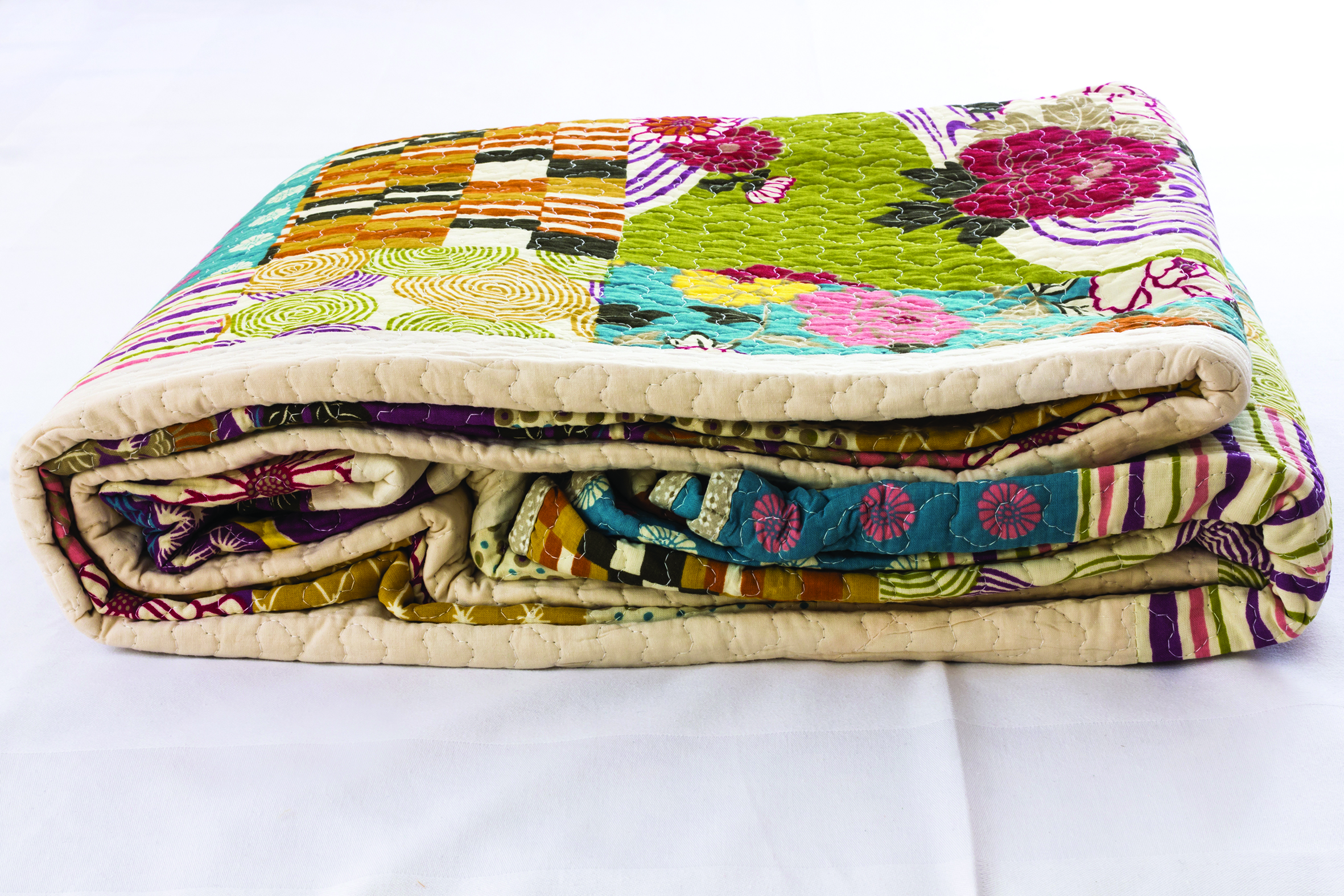What was once a loss leader, and commonly thrown in as gifts to go with a mattress purchase is holding its own ground today. In the estimated Rs 10,000 crore market, bed sheets and covers are slowly inching their contribution. Though numbers are tough to come by, estimates put it anywhere between Rs 350 – 500 crore in the organized sector, making up 10 – 15 percent of the organized sector market size.
How did the Humble Sheet Make it Here?
Not long ago, a typical bed was made from straw, animal hides, leaves, feathers, wool, and hair to add a little bit of cushion to the makeshift mattresses. Even pillows were made from some of the same materials. The bedding evolution was brought about by the mighty Egyptians in 3400 BC. They essentially moved their beds off the floor installing their cosy bed on an elevated platform and wrapping them in fine linen.
What began as the prerogative of the Royals and the rich, gave way to a revolution in how people slept. Yet it took the Industrial Revolution and beyond to get the bedding revolution. And during all of these, the sheets and covers were the ones which got all the attention. That was until the advent of urbanization when the mattress became the center of attraction which would be placed over an iron cot or a wooden bed. Finally, thanks to the retail revolution which began an aggressive marketing push to sell mattresses and made the sheets and covers loss-leaders, giving them away as incentives.
Today, sheets and covers are making a comeback and holding their own ground. Let’s see how to navigate that world.
Navigating the World of Sheets and Covers
The microfiber fabric is supremely soft, and it is still a bit breathable, so you should be able to sleep on this sheet year-round. Still, you might find it warmer than you’d prefer because of the synthetic material.
The polyester fabric makes this sheet less likely to pick up stains or wrinkles, which adds to the convenience factor of this fitted model. However, this sheet is much thinner than you might expect. So, the colours might not seem right. Plus, there are some quality control issues. The elastic has snapped early on for some users, and threads have unravelled in the stitches. Many more people have had no issues, though.
Choosing Accessories
“Look for the terms ‘long-staple cotton’ or ‘extra-long-staple cotton’ in the description instead,” Crane & Canopy CEO and founder Karin Sun has told Real Simple. “These long fibres are turned into the finer threads that indicate quality.”
You should consider other factors when buying sheets, too, including the finish and any dyes used. If you haven’t found the most comfortable sheets yet, try an alternative bed sheet set that forgoes traditional cotton in favour of other bedding fibres. Who knows, one may be the key to a better night’s sleep for you. Some people are looking for comfort, while others want warmth or cooling abilities; some even shop primarily for appearance and pick sheets based only on what will look best in the bedroom. Knowing what bedding characteristics you want to prioritize can help guide the sheet shopping process, so you aren’t wasting time looking at sheets that won’t work for you—no one with a penchant for linen sheets wants to spend time sifting through page after page of cotton bedding.
If comfort is key to getting a good night’s sleep, though, these sheets have you covered. Best of all, they prove that thread count isn’t everything—and these most comfortable sheets may introduce you to a whole new world of bedding.
What’s on Offer
Sheets
Let’s understand what a typical sheet set includes. A sheet set has a bottom fitted sheet, a top sheet to cover your body, and at least one pillow cover. So when you talk of sheets, you talk of all these things together. When you sleep, the sheets cover your body and it’s important that they are comfortable and make you feel good when you are in bed.
Today you get to choose luxurious sheets from several brands. Just walk into your local mattress and linen store or a mall to check on the wide variety of sheet sets available in the market. Believe us, there is an overwhelming variety to choose from.
In order for you to decide on which sheet to buy and how much to spend on a typical sheet set, you need to understand the variety a bit.
For the uninitiated, it may come as a surprise to know that sheets are made from a variety of different materials including cotton, polyester, tencel, flannel, linen, silk, bamboo, and rayon. In the Indian market, cotton and cotton blend sheets dominate the market not because they are more affordable. Due to their material characteristics, they’re airier, and more comfortable in terms of texture and feel — soft and smooth. In certain micro markets, flannel and silk sheets are becoming quite popular. For instance, flannel sheets offer better warmth and make you feel cosy if you live in a colder environment or live where the seasons change. Whereas, silk or satin sheets are preferred during summer owing to the fact that they are breathable and provide a cooling impact.
Thread Count
What to look for next is the thread count — a popular metric among fabric manufacturers to ascertain the fabric’s structure. Thread count determines how the sheets’ fabric is built and is not a measure of the fabric’s quality. When buying sheets ask about the thread count of the fabric. Here’s a catch, unless you are an expert, the store hand’s word is what you can go by. But most often you can trust the store’s hand. Thread count refers to the number of horizontal and vertical threads per square inch of the sheet. The higher the thread count, the higher the weight of the fabric and comfortable. However, a lower thread count makes the fabric more airy and breathable but will not have the same weight as a fabric with a higher thread count. The thread count of high-quality sheets can range between 200-800. A thumb rule is, if you need a warm, cosy feeling for cold nights, pick out the higher thread count. A lower thread count will go well for summers or warmer nights.
Cotton Sheets As discussed earlier, cotton sheets are airy and breathable, hence are preferred more in the Indian climatic conditions. Among cotton sheets, the most luxurious ones are Egyptian cotton sheets. They’re softer and more durable than regular cotton and not surprisingly they do not come cheap.
Talking of cotton, those who prefer to go eco-friendly have a choice of organic cotton sheets available in the market today. Organic cotton also ensures they are pesticide and pigment-free, free from chemical additives, and hypoallergenic materials. They are best for babies and children.

Tencel Sheets
If you are looking for an alternative to cotton, consider Tencel. Tencel is a brand name for lyocell fabric. Tencel is a synthetic fibre made from a blend of the cellulose of eucalyptus trees, hemp, wool, and other natural fabrics. When compared to cotton, tencel is softer, less likely to wrinkle, and less likely to shrink even after multiple washes. Tencel sheets are relatively popular amongst “green” consumers as Tencel is made from only organic fabrics and the manufacturing process is eco-friendly.
If you can avail of this material, you can consider fabric made from bamboo. Bamboo sheets are another eco-friendly bedding option. Bamboo fabric offers all the advantages of linen like being hypoallergenic, antimicrobial, antibacterial, thermo-regulating, and resistant to pests and fungi. Not all stores will have this option. You need to pick and choose.
Flannel Cotton
Sheets If you live in a cold climate, flannel sheets are the way to go. These sheets are made of cotton fluffed to feel softer and warmer. When you sleep in flannel cotton sheets, they should trap your body heat around you, preventing you from waking up cold. Flannel sheets aren’t available in different thread counts; instead, they’re compared by weight. A high-quality flannel sheet should have a rating of 170 GSM or higher.
Silk Sheets
Silk is not only considered ostentatious, opulent and pricey but also healthy. You won’t find silk sheets in any common bedroom, let alone your overnight stay budget hotel. A connoisseur of sleep can understand the value of silk more than a household where sleep is but a necessity. Being naturally hypoallergenic it is good for the skin and hair. Silk is moisture-wicking, so it should keep you cool while you sleep.
Linen Sheets
Linen is considered to be the best fabric to make sheets and is more popular too. Due to the fact that linen is twice as durable as cotton, it is the favourite of every household with a good taste and the darling of the hospitality industry. To add, linen is bacteria-resistant, ventilating, moisture-absorbent, hypoallergenic, dirt-repellent, and good for people with sensitive skin. Linen sheets used to be costlier but mostly owing to better manufacturing processes they are becoming more affordable and owing to their durability, lasting years, they are popular.
Comforters, Duvets & Blankets
On a cold night, sheets alone are not enough to comfort you. You’ll need a comforter to keep warm and cosy at night. A comforter is a two-piece fabric sewn together with a filling, typically down feathers or synthetic fibre. You usually pair comforters with a sheet set to keep you warm while you sleep. Comforters come in different varieties as well. The type you will pick depends on how of comforter you buy will depend on how warm you want it to be. A down feather-filled comforter will give you enough warmth while a lightweight cotton comforter will help you sleep longer during warm days.
Now, do not confuse Duvets with comforters. The two look the same but a duvet is essentially a bag. A duvet is a soft, flat fabric bag with some filling— whether it be fiberfill, down, polyester, wool, or silk. You can remove the duvet cover to wash it, and you can pair it with a fitted or bottom sheet. Pairing your bedding set with a blanket, or two keeps the cold away. If you’re looking for a blanket to help you sleep better, a weighted blanket is worth researching.
The New Accessories Market
Thanks to the good home revolution, you can find sheets, covers, comforters, duvets and blankets at many home decor stores. It is estimated that for every mattress sale, an average of 2 sets of sheets, 3 blankets or a combination of comforters and duvets are sold. In colder climates like in upper northern Indian regions, this average will go up to 2 sets of sheets, 5 blankets or a combination of comforters and duvets with every mattress purchase. That’s just a thumb rule.
The good thing about sheets and covers is that they add to the home decor, feel and ambience that people over time tend to buy and stock at home more and change on various occasions.
Thankfully, retail stores are now realizing how important sheets and covers are on their own and are taking steps to display them better and offer exciting offers — not just use them as incentives with mattress purchases.


